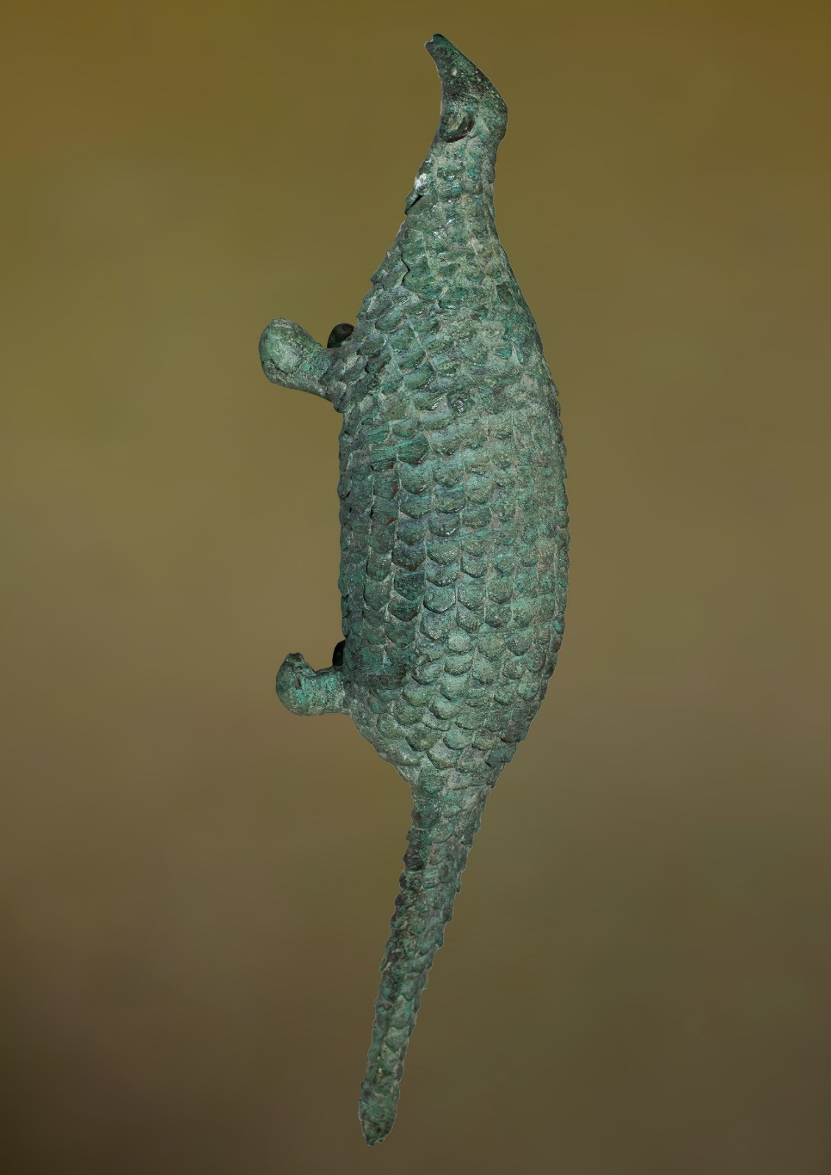Tinh Le
Dating back to the early Common Era (1st–2nd century CE), this one-of-a-kind bronze sculpture is celebrated for its distinctive design and exceptional craftsmanship.
Artistic details and cultural significance
The Long Giao bronze pangolin was crafted using a multi-layered wax mold technique, resulting in a three-dimensional statue.
The statue portrays the pangolin in a balanced, upright position, made from bronze alloy.
Its elongated head features a long snout, a slightly open mouth, small protruding eyes, and ears adorned with circular ridges resembling earrings.
From its neck to its tail, the body is covered in overlapping rows of scales, with the exception of the belly.
The figure’s body is broad at the torso and tapers towards the tail, which features a cavity at its base.
The statue stands on four legs, with the front ones being longer (3.5 cm) than the back ones (2 cm).
Unlike a real pangolin, the sculpture does not depict five toes or sharp claws.
Its exterior is coated with a grayish-green patina, enhancing its antique aesthetic.
Experts believe the statue was modeled after the Javan pangolin (Manis javanicus), a species native to southern Vietnam.
Historical discovery and unparalleled craftsmanship
Unearthed at a depth of 40 cm alongside a collection of bronze artifacts in Long Giao, the statue provides valuable insight into prehistoric and early historical sculpture and spiritual beliefs.
It marks the first documented depiction of the pangolin in Southeast Asia’s prehistoric art and represents a significant achievement in creating three-dimensional sculptures.
As the largest bronze statue of its kind discovered in the region, it highlights the advanced bronze-casting techniques of ancient Dong Nai artisans.
The statue's precision in mimicking a real pangolin—from its snout to its intricately layered scales—demonstrates the extraordinary skill of the artists.
The Long Giao bronze pangolin is not only a testament to the aesthetic sophistication of ancient Dong Nai craftsmen but also reflects the region’s spiritual and cultural heritage.
The statue's lifelike and meticulous design exemplifies the pinnacle of prehistoric and early historical artistry in Vietnam and Southeast Asia.
This unique artifact remains a profound symbol of the creative and technical prowess of the Dong Nai community during the Bronze Age.


